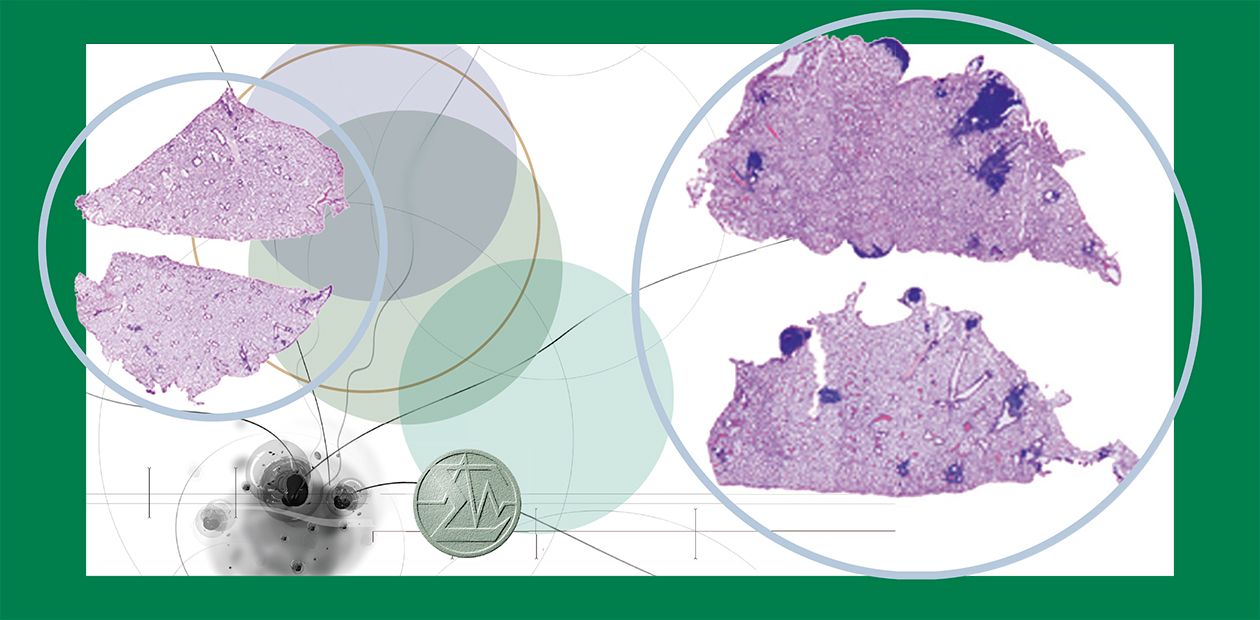Nucleases against Metastases
Antitumor and antimetastatic activities of nucleases – natural enzymes already used in medicine as antiviral therapeutics – have been discovered and studied at the Institute of Chemical Biology and Fundamental Medicine, Siberian Branch of the Russian Academy of Sciences (Novosibirsk), under an integration project in collaboration with the Institute of Cytology and Genetics, Siberian Branch of the Russian Academy of Sciences (Novosibirsk)
As is known, a major problem in oncology as well as the main cause of mortality of cancer patients is metastases of the primary tumor, i.e. the ability of primary tumors to develop secondary foci of malignant growth. R. I. Salganik, an outstanding Novosibirsk biochemist, was the first to bring up the issue of an antitumor potential of DNase I as long ago as the late 1960s, in his paper published in Nature (Salganik et al., 1967). A few studies devoted to the antitumor activity of nucleases were performed only a quarter century later (Sugihara et al., 1993; Source et al., 1996; Newton et al., 2001).
Researchers from the Institute of Chemical Biology and Fundamental Medicine have studied antitumor and antimetastatic potential of RNase A and DNase I using two models of mouse metastatic tumors, Lewis lung carcinoma and hepatoma A1. The studied nucleases displayed an anticarcinogenic activity at very low concentrations, which are considerably lower than the usually administered therapeutic doses.
Thus, an intramuscular injection of RNase A in doses of 0.1—50 µg/kg retards the development of the primary tumor by 20—40%. RNase A and DNase I in low doses (35—7 µg/kg and 0.02—2.3 mg/kg, respectively) significantly decrease the number and the total area of metastases formed upon tumor progression.
A histological examination of the target organs has demonstrated that administering nucleases destroys tumor cells, increases the number of necrotic foci and apoptotic events (cell suicides) in metastatic foci, and causes the infiltration of metastatic foci with cells of the immune system.
These results demonstrate that RNase A and DNase I can be used as an adjuvant therapy in treatment of metastatic tumors. However, first it is necessary to proceed through standard preclinical and clinical trials of the corresponding preparations. This is a long and expensive process; however, it is an obligatory stage even when a drug is approved for clinical use but either its dose or the target disease changes.
References
Patutina O. A., Mironova N. L., Ryabchikova E. I., et al. Antitumor and antimetastatic actions of RNase A and DNase I // Acta Naturae. 2010 [in Russian].
Shklyaeva O. A., Mironova N. L., Malkova E. M., et al. Oncosuppressive action of RNase A and DNase I // Dokl. Ross. Akad. Nauk. V. 420. No. 1. P. 134—138 [in Russian].







